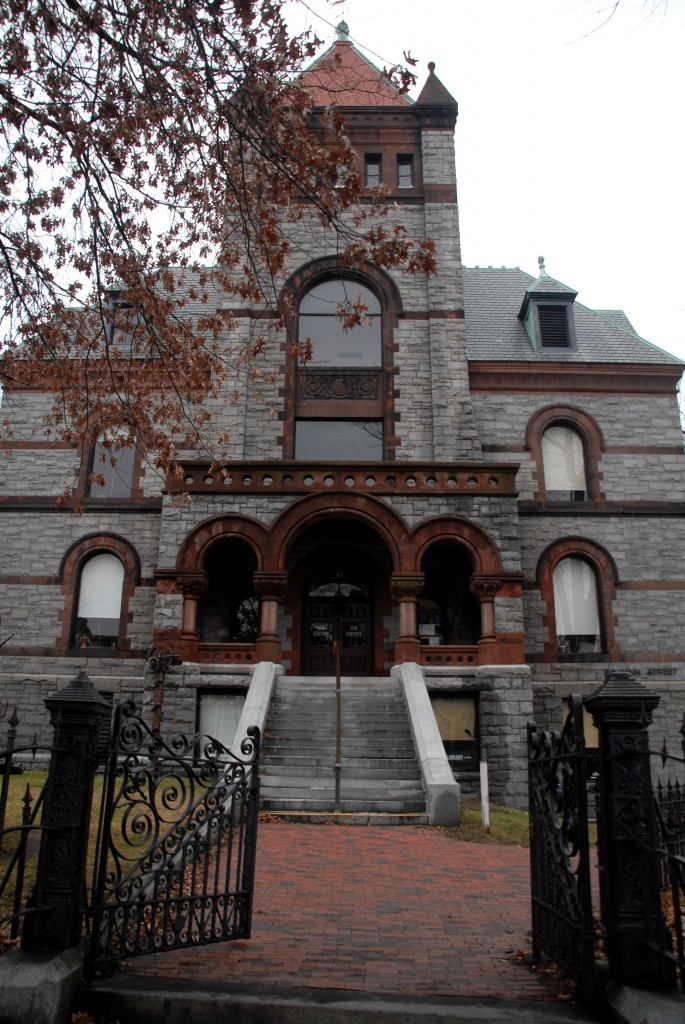Every courthouse tells a story, every day.
There are 3,141 county courthouses in the United States. “Whatever their individual histories,” former Massachusetts Supreme Court Justice Paul C. Reardon has written, “together they have had a deep and lasting influence on the country and its people…And what tales most of these courthouses could tell!”
In my next book, 15 GOTHIC STREET, I’ll be telling the tales that unfold in (and extend beyond) a single courthouse—the Hampshire County Courthouse, 15 Gothic Street, Northampton, Massachusetts–over the course of a single calendar year.
It’s in the courthouse that we get a glimpse, as Edith Wharton once wrote, “behind the social tapestry, on the side where the threads are knotted and the loose ends hang.”
My year at 15 Gothic Street will yield a cornucopia of powerful stories: each self-contained, as in a dramatic TV series, yet with the recurring characters—an ensemble, really, of judges, prosecutors, defense attorneys and court administrators–ultimately producing a whole narrative greater than the sum of its parts.
A courtroom possesses an awful majesty. It is a secular cathedral that can provoke a nearly religious awe. No other symbol of either church or state power has maintained such aura of absolute authority into the 21st century.
By its very architecture and procedural inflexibility—the judge presiding from on high, the requirement that all must stand when the judge enters and leaves the room, the literal bar that confers status on those whom bailiffs permit to stand or sit in front of it–the courthouse vests its functionaries with almost ecclesiastical powers.
But the courtroom is not only a cathedral: it’s also a theater. The late John Gregory Dunne once wrote, “A day in court is like watching the ultimate game show, the game being life itself.” Given the time I’ve spent at the criminal trials of Jeffrey MacDonald (Fatal Vision), Robert Marshall (Blind Faith), and O.J. Simpson (at which I had a front row seat every day for the full ten months), I feel well qualified to serve as drama critic.
At one level, 15 GOTHIC STREET will be a cross between Law and Order and Boston Legal, but it will provide thicker texture, stronger characters, more nuanced plots and (dare I say it?) better writing than either.
Plus, it will have the advantage of being true.
I’ll write not only about criminal proceedings and civil actions, but also about justice and community, and how the two intersect, not only on the courtroom stage, but in the larger world beyond.
Hampshire County, Massachusetts, is a real-life version of Garrison Keillor’s fictional Lake Wobegon, “where all the women are strong, all the men are good looking and all the children are above average.”
In 1851, the Swedish opera star Jenny Lind visited Northampton and proclaimed it “the paradise of America.” The city’s official nickname today is “Paradise City.”
Yet there is sometimes trouble, even in paradise.
The worst of the troubles find their way to the county courthouse, where they are laid bare every day, Monday through Friday.
15 Gothic Street is a world unto itself, and both those who earn a living there and those who are merely passing through (some in handcuffs, some weeping in the spectators’ gallery, some pacing nervously in the corridor) will provide the raw material from which I’ll fashion my narrative.
Coming attractions include the trial of a drama coach accused of having sex on multiple occasions with a girl under the age of fifteen to whom he was giving acting lessons; the first degree murder trial of a popular young Northampton man accused of setting more than a dozen house fires, one of which killed a father and son, and the first degree murder trial of a woman accused of strangling her wife—the first same-sex spousal murder case in Massachusetts (and maybe the country) since the state legalized same-sex marriage.
In addition, as Jonathan Harr showed in A Civil Action and as I learned personally when triple-murderer Jeffrey MacDonald (Fatal Vision) sued me in federal court in Los Angeles, civil cases can be equally fascinating.
The year promises to be rich in dramatic event.
Superior Court is on the third floor of 15 Gothic Street. Admission is free. You can’t miss the building. It’s been there since 1887.
I’ll be there from nine a.m. to one p.m. and from two to four p.m., Monday through Friday, almost every day that court is in session.
At lunch hour, you can probably find me across the street at Jake’s, chatting with lawyers, townspeople and other interested parties about what just happened in the morning and what might happen in the afternoon.
If you’re in town, stop by and say hello.
_________
Episode One: Primitives Read at Byliner | Read on Kindle
Episode Two: The Human Circus Read at Byliner | Read on Kindle
